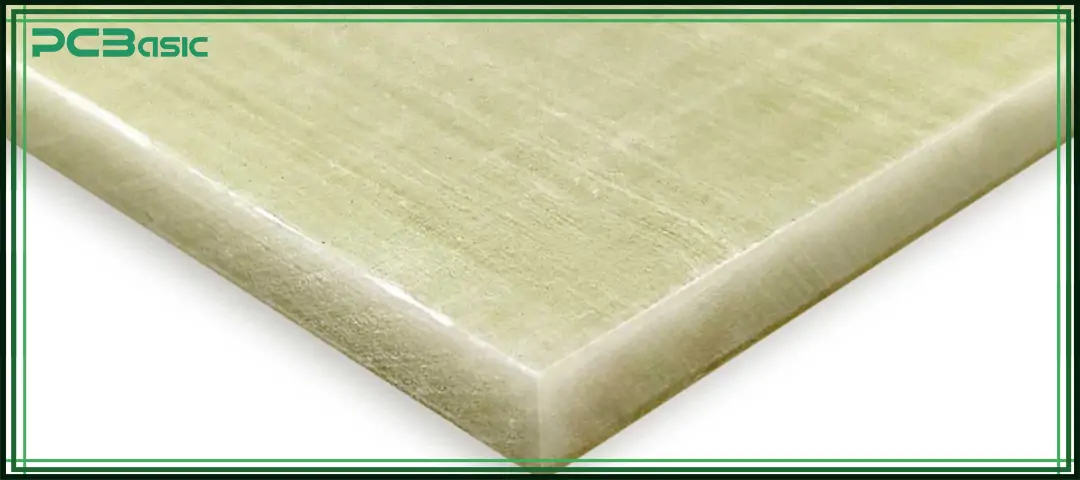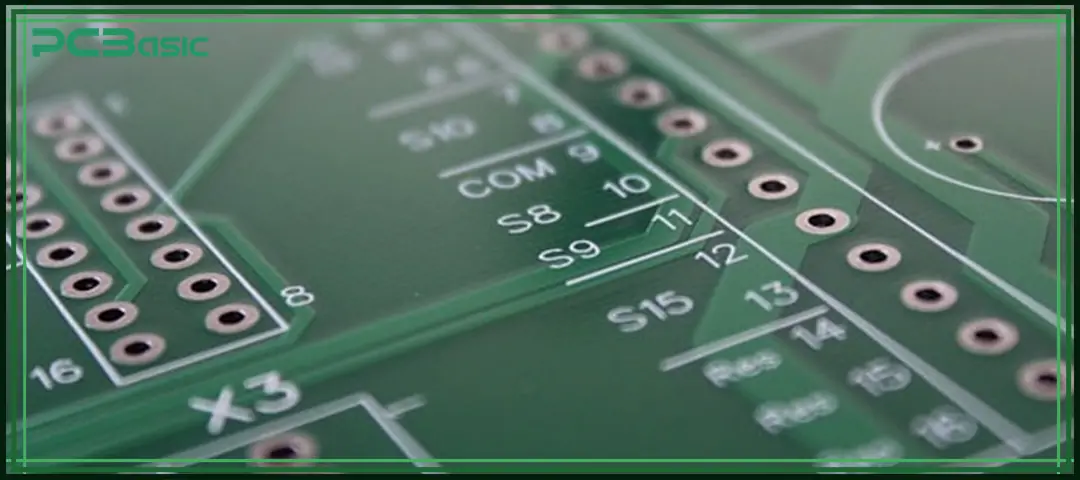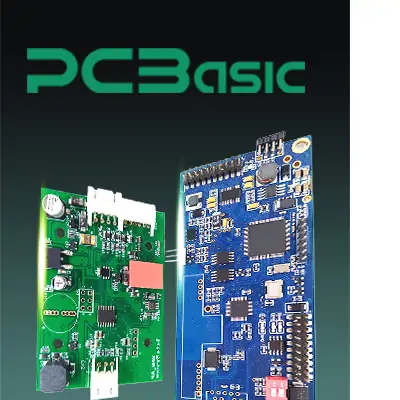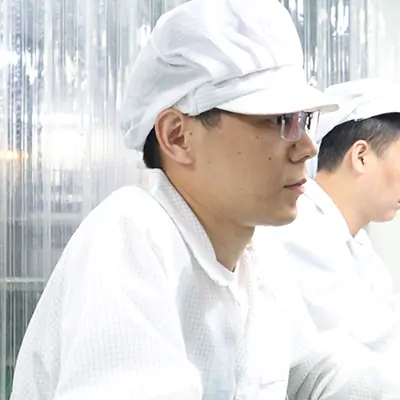

Global high-mix volume high-speed PCBA manufacturer
9:00 -18:00, Mon. - Fri. (GMT+8)
9:00 -12:00, Sat. (GMT+8)
(Except Chinese public holidays)


Global high-mix volume high-speed PCBA manufacturer
9:00 -18:00, Mon. - Fri. (GMT+8)
9:00 -12:00, Sat. (GMT+8)
(Except Chinese public holidays)
HomePage > Blog > Knowledge Base > What Is G10 Material? A Complete Guide
In the fields of engineering, electronics and high-performance composite materials, G-10 material is a common and important material. G-10 material possesses characteristics such as high strength, light weight, good moisture resistance, and strong insulation properties. Due to these advantages, G-10 material is widely used in various industries, including printed circuit boards (PCBs), aerospace structural components, industrial insulation boards, and consumer products like knife handles.
So, what exactly is G-10 material? What is G-10 material made of? Why can G-10 material still function stably in harsh environments? Additionally, compared to the commonly used FR-4 material, what are the main differences between G-10 material?
This guide will provide a detailed explanation of the definition and composition of G-10 fiberglass, describe how G-10 materials are produced, and conduct an in-depth analysis of the key properties of G-10 material. We will also summarize the advantages and limitations of G-10 materials in practical engineering applications. At the same time, we will focus on comparing the differences between G-10 materials and FR-4 materials, helping you select the appropriate G-10 board or other composite material solutions based on specific requirements.

G-10 material is a common type of high-pressure fiberglass laminate, belonging to engineering composite materials. G-10 material is formed by compressing woven fiberglass cloth with epoxy resin under high temperature and high pressure. The finished sheet is hard and dense, and has excellent rigidity, strength and electrical insulation properties.
G-10 fiberglass was initially used in circuit boards as a stable insulating layer material. Later, due to its strong durability, easy processing, resistance to chemical corrosion and low moisture absorption, it gradually found applications in more industrial and consumer fields. Currently, G-10 material is widely used in electronic devices, industrial mechanical parts, insulating structural components, as well as knife handles, tool handles and other products.
The main raw materials of G-10 material are epoxy resin and fiberglass cloth. These two materials are combined through the laminating process to form a reinforced plastic composite material. It has good structural stability and can withstand high mechanical loads and electrical pressures. Making it suitable for various harsh environments.
Other common names of G-10 material include G-10 fiberglass board, G-10 plastic and G-10 board.
The manufacturing process of G-10 material is a typical laminating process. Its core lies in combining and curing multiple layers of woven fiberglass cloth and epoxy resin under high temperature and high pressure, to form a stable and reliable structure. The main steps are as follows:
Fiberglass Cloth Preparation
Before manufacturing the G-10 material, the fiberglass cloth needs to be pre-treated. This involves removing impurities, drying the moisture, and cutting it to the standard size. The fabric must be clean and tidy to ensure that the epoxy resin can evenly penetrate each layer.
Epoxy Resin Impregnation
Each layer of fiberglass cloth will be completely immersed or evenly coated with the pre-mixed epoxy resin. This step is crucial as the resin must penetrate fully into the fibrous structure to ensure that the G-10 material possesses excellent strength and electrical insulation properties.
Layering and Pre-Pressing
The fiberglass cloth impregnated with resin will be stacked layer by layer according to the designed thickness. Then it will be placed in a hot press for pre-pressing, which helps to shape the material and at the same time removes the air and excess resin, preparing for the subsequent curing process.
High-Pressure Curing
The material is cured in a hot press under high pressure (generally over 1000 psi) and high temperature (up to 180°C or 356°F). At this point, the epoxy resin undergoes a crosslinking reaction, firmly bonding all layers together to form a hard and dense integral board. This step is crucial for maintaining the consistency of G-10 material properties.
Cooling and Post-Processing
After being solidified, the board needs to be slowly cooled to room temperature to avoid deformation. Then, trimming and cutting are carried out. Sometimes, CNC equipment is used for drilling or customizing the shape. This can make the G-10 board meet the specific requirements of various industrial applications.
The G-10 material produced through the above process has high strength, stable dimensions and excellent insulation properties. It is widely used in fields such as electronics, electrical engineering, machinery, military, cutting tools and equipment. This manufacturing process also ensures that products from different batches have consistent quality, meeting the requirements of various high-standard industrial applications.

The G-10 material is widely used because of its excellent physical, electrical and thermal properties. The properties of these G-10 materials make them highly suitable for applications requiring high strength and harsh environments.
|
Property |
Typical Value |
|
Density |
1.8 – 2.0 g/cm³ |
|
Tensile Strength |
Up to 55,000 psi |
|
Flexural Strength |
60,000 – 65,000 psi |
|
Compressive Strength |
60,000 – 70,000 psi |
|
Dielectric Strength |
>500 V/mil |
|
Water Absorption |
<0.10% |
|
Operating Temperature |
-60°C to 130°C |
|
Thermal Conductivity |
Low (insulating) |
|
Flame Resistance |
Poor (unless modified to G-10 FR-4) |
Compared with other laminated materials, G-10 plastic achieves a good balance between strength and weight, being both sturdy and lightweight. However, it should be noted that the G-10 material itself does not have fire-retardant properties. If fire resistance is required in the application scenario, it is recommended to choose FR-4 material with fire-retardant characteristics.

Time is money in your projects – and PCBasic gets it. PCBasic is a PCB assembly company that delivers fast, flawless results every time. Our comprehensive PCB assembly services include expert engineering support at every step, ensuring top quality in every board. As a leading PCB assembly manufacturer, we provide a one-stop solution that streamlines your supply chain. Partner with our advanced PCB prototype factory for quick turnarounds and superior results you can trust.
Advantages of G-10 Material
G-10 material possesses high strength while being relatively lightweight. This advantage of a high strength-to-weight ratio makes it highly suitable for use in aerospace, military equipment, and electronic products.
G-10 material also has excellent electrical insulation properties and is commonly used in circuit boards, switch devices, and transformer structures, effectively isolating current and ensuring the safe operation of the system.
G-10 material is resistant to most acids, bases and organic solvents and is not prone to corrosion. It also performs stably in humid environments, has a low water absorption rate, and is not likely to deform or fail due to moisture.
In terms of processing, G-10 material has significant advantages. It can be cut, drilled and engraved using standard CNC equipment. The material comes in various forms, including sheets, round rods and custom shapes, and is suitable for different industrial needs.
Limitations of G-10 Material
Although G-10 material is very durable, it also has some limitations. The most obvious one is that standard G-10 material does not have flame-retardant properties. If the application scenario requires the material to reach flame-retardant levels such as UL 94 V-0, it is not recommended to use ordinary G-10.
In addition, although G-10 material has high strength, it is relatively brittle. When subjected to strong impacts, it is prone to edge and corner fractures or fragmentation, which is not as good as some more resilient engineering plastics.
During the processing, the G-10 material contains fiberglass. During the cutting or grinding process, a large amount of dust will be generated, which may be harmful to the respiratory system. Therefore, during the processing, a dust-proof mask must be worn, and a ventilation device must be used to ensure the safety of the operators.
Due to its excellent performance and wide range of applications, the G-10 material is widely used in various industries.
Common Applications of G-10 Material – Comparison Table
|
Application Area |
Description |
Typical Uses |
|
Electronics & PCBs |
Originally developed for circuit boards; excellent dielectric and insulation properties |
Multilayer PCBs (G-10 board, G-10 FR-4), insulation structures |
|
Industrial & Mechanical |
High dimensional stability and chemical resistance; ideal for load-bearing or precision parts |
Structural insulation for motors, transformers, control panels; G-10 plastic gears, washers, bearings, and gaskets |
|
Aerospace & Defense |
Lightweight and strong; non-conductive; suitable for harsh environments and high-reliability needs |
Aircraft interior components, tooling fixtures, non-conductive panels |
|
Consumer Products & Tools |
Durable, moisture-resistant, and grippy surface; ideal for handheld items |
Knife handles, tool grips, game accessories, tactical gear |
G-10 material is also highly favored in the manufacturing of cutting tools because it is resistant to moisture, durable, and even in a humid environment, its surface does not become slippery, providing a good grip.

G-10 and FR-4 are both fiberglass and epoxy resin laminated materials, but their main difference lies in whether they possess flame-retardant properties.
FR-4 is also a commonly used flame-retardant fiberglass epoxy laminated board material. It is formed by pressing together fiberglass cloth and flame-retardant epoxy resin under high temperature and high pressure.
This material has high strength, good insulation properties, and flame-retardant performance. It is widely used in the manufacturing of printed circuit boards (PCBs). It complies with the UL 94 V-0 flame-retardant grade standard and is not prone to burning when exposed to high temperatures or fire sources. It is one of the most commonly used circuit board substrates in the electronics industry.
|
Feature |
G-10 |
FR-4 |
|
Base Material |
Epoxy + fiberglass |
Epoxy + fiberglass |
|
Flame Retardant |
No |
Yes (brominated additives) |
|
Mechanical Strength |
High |
High |
|
Electrical Insulation |
Excellent |
Excellent |
|
Moisture Resistance |
Excellent |
Excellent |
|
Applications |
Tools, aerospace, PCBs |
PCBs, industrial electronics |
In short, the structure and performance of G-10 and FR-4 are almost the same. The difference lies in the fact that FR-4 contains flame retardants and has better fire resistance. Therefore, the properties of FR-4 materials are more suitable for use in electronic products that meet UL standards or have fire prevention requirements.
When choosing between using G-10 board or FR-4, it can be decided based on the actual application environment. If the usage environment is dry, has a low temperature, and there is no risk of open flames, using G-10 fiberglass can meet the requirements. If the environment has specific requirements for flame retardancy, then it is recommended to choose G-10 FR-4.
G-10 material is a common composite material, featuring high strength, good insulation, moisture resistance, and ease of processing. It is widely used in areas such as printed circuit boards, industrial insulation components, aerospace structures, and tool handles. Understanding what G-10 material is, what it is made of, and comparing its properties with those of FR-4 material can help in choosing the appropriate material.
If flame-retardant properties are required in the application, FR-4 is recommended. It retains the basic performance of G-10 while having better flame-retardant capabilities. Additionally, choosing experienced manufacturers can help obtain G-10 material solutions that meet industry requirements.

Assembly Enquiry
Instant Quote
Phone contact

+86-755-27218592
In addition, we've prepared a Help Center. We recommend checking it before reaching out, as your question and its answer may already be clearly explained there.
Wechat Support

In addition, we've prepared a Help Center. We recommend checking it before reaching out, as your question and its answer may already be clearly explained there.
WhatsApp Support

In addition, we've prepared a Help Center. We recommend checking it before reaching out, as your question and its answer may already be clearly explained there.
